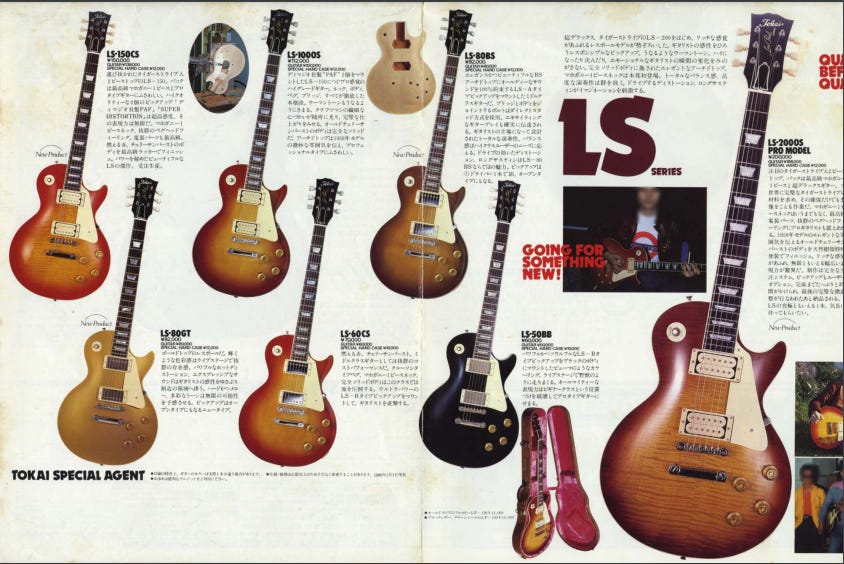Guitar Gavel Lick Of The Week with Stevie K - A Major Arpeggio
Take it, bake it, make it your own. A beautiful descending/ascending/descending pattern leaving plenty of room for your personality.
Thank you Steve for sharing you time, treasure, and talent. Steve Kuykendall is a lifelong musician and remains an active indie artist and teacher. His music is available on Cedro Rosa Digital, Amazon, Apple Music, and Spotify.
In the right circle of guitar friends, the city of Hamamatsu, Japan could be considered a holy grail of modern musical instrument manufacturing. In 1887, twenty-six-year-old Torakusa Yamaha built his first reed organ by hand in Hamamatsu and the beginnings of Nippon Gakki (Yamaha Corporation) was born.
One of Torakusa’s apprentice in the early days of the company was a young man named Koichi Kawai. His collaboration at Yamaha led to the introduction of the first domestically manufactured pianos in Japan. Koichi left Yamaha in 1927 and founded the Kawai Musical Instrument Research Laboratory in Hamamatsu. Known mostly for their pianos, Kawai also built guitars beginning in the 1950s and expanded their musical footprint with the acquisition of Teisco in 1967.
Also home to the city of Hamamatsu is the Suzuki Musical Instrument Corporation, founded in 1953. Suzuki is known for their pianos and harmonicas and bought the Hammond Organ Company in 1989, now known as Hammond-Suzuki.
Another household name based in Hamamatsu is the Roland Corporation, though not originally located in the city, they moved their offices their in 2005.
Therefore, it’s with good reason the only public museum in Japan dedicated to musical instruments is in Hamamatsu, the Hamamatsu Museum of Musical Instruments. The city really is an instrument manufacturing mecca.
But this story is about Tokai Gakki Co., established in 1947 as Tokai Musical Instrument Research. “Gakki” means “musical instrument” in Japanese. Tokai’s founder was Tadayouki Adachi and the first instruments produced were harmonicas and pianos, followed by accordions. Classical and acoustic guitars entered the picture in 1965 with electric guitars not far behind in 1967. The early Tokai electrics were badged “Humming Bird” and were modeled after a Mosrite Ventures guitar with the German carve and pickup positioning. However, the Humming Bird’s had extreme horns, something more Samurai-ish! Side note for those uninitiated, The Ventures outsold the Beatles in Japan two-to-one and their musical influences on the country and burgeoning guitar players cannot be overstated. Japan could also be labeled as the Mosrite knock-off capital of the world.
Tokai’s first foray into the U.S. market came in 1970 under the G.C. Conn label of acoustic guitars as a contract builder for the decaying G.C. Conn company. A couple of years later C.F. Martin used Tokai as a parts supplier for their Sigma acoustics and to build the Sigma solid-body electrics. Surprisingly, in tandem while working for Martin, Tokai launched the Cat’s Eyes series of acoustic guitars which were/are Martin copies.
As the 1970s progressed and the American copy wars were launched, Tokai was slinging some serious guitar rockets. Gibson copies were first on the firing line in 1976 with Tokai’s “Les Paul Reborn” guitar. Then came Fender renditions as the “Springy Sound” and “Breezy Sound” guitars being a Strat and Tele copy the following year. Although these were intended for the domestic Japanese market, Gibson wasn’t amused, so Tokai changed the Les Paul name to “Love Rock” in 1978. The Fender copies also received updated names the same year.
These guitars were high-end replicas, not budget models. Early construction methods of the Les Paul Reborn deployed a single slab mahogany body and full-depth maple top. Exportation to the USA and some European countries began in 1980 and the body was changed to a two-piece mahogany.
There were a handful of Love Rock models in the early 80s all of which had the same general materials except different pickup offerings: mahogany body and mahogany set neck, and a carved maple top (fancier versions had flame maple). On today’s market, prices of the Love Rock range from just shy of $1,000 to approximately $2,500 depending on the model. Given the quality control issues experienced by Gibson and Fender in the late 1970s (especially Fender), the high end Tokai versions of those guitars are an incredible buy.
Fun rabbit hole- We have Tokai to thank for Robin Guitars
David Wintz and Bart Wittrock opened Rockin Robin guitar shop in Houston in 1972. They built a solid reputation doing repair work and specializing in selling used instruments.
In the early 80s the guys hooked up with Tokai at a NAMM show in Chicago and bought all their on-hand inventory of Love Rock’s and Springy Sounds to sell at their store. Those sold through quickly so they reupped an order for about 100 Springy Sounds and they showed up without a Tokai logo. The guys whipped a Robin decal and stuck it on the headstock!
And the brand was born…
Robin then contracted with Tokai to produce some of their own designs and in 1982 the first shipment of legitimate Robin guitars landed.




